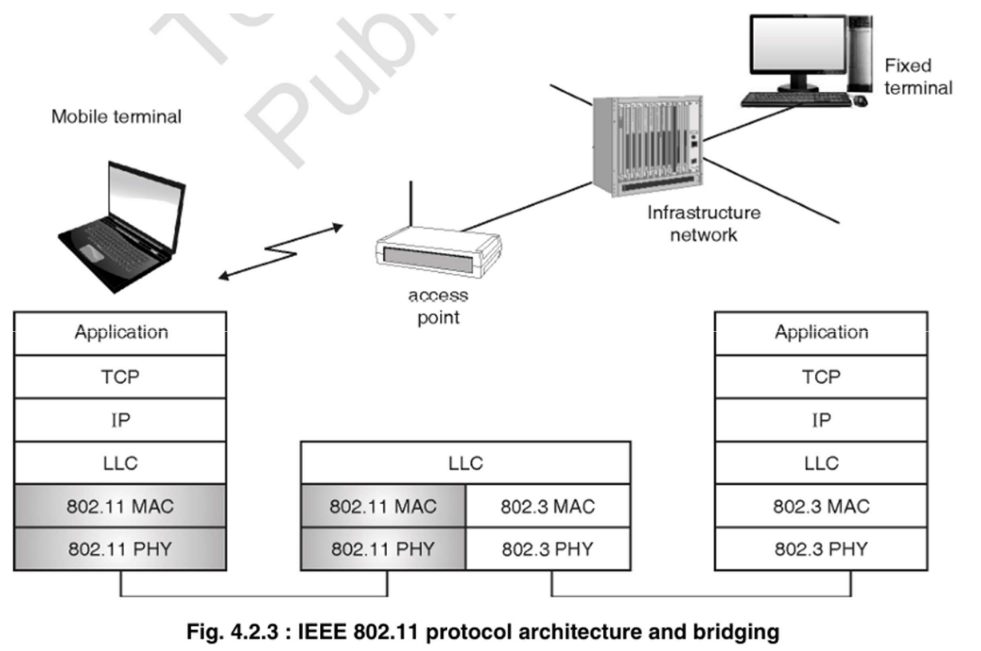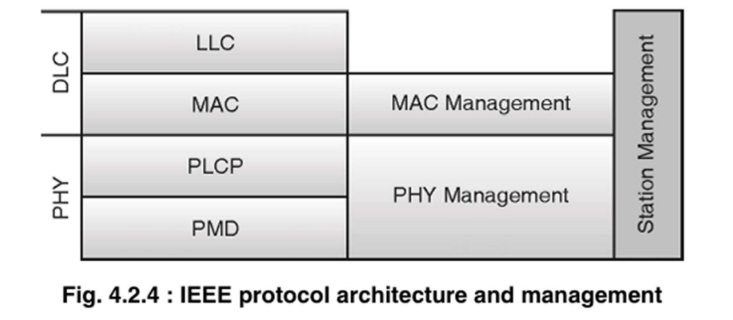The IEEE 802.11 standard defines the protocol architecture for Wireless Local Area Networks (WLANs). It describes how data is transmitted and managed over wireless networks.

This architecture facilitates the connection of wireless devices to a wired network using WiFi (IEEE 802.11) through an Access Point (AP). The AP acts as a bridge between two networks:
- Wireless (IEEE 802.11)
- Wired Ethernet (IEEE 802.3)
Although these networks use different MAC and PHY layers, they share a common LLC layer, which enables communication. The AP translates between the two protocols, allowing devices on both networks to utilize the same TCP/IP applications for services like web Browse or email. This setup facilitates smooth communication in infrastructure-based wireless networks.

The IEEE 802.11 protocol architecture is typically described in terms of the following layers:
-
Physical Layer (PHY):
- Responsible for wireless signal transmission and reception.
- Defines modulation techniques (e.g., OFDM, DSSS) and data rates.
- Divided into three sublayers:
- PMD (Physical Medium Dependent): Responsible for the actual modulation and transmission of signals.
- PLCP (Physical Layer Convergence Protocol): Prepares data for transmission and adds headers.
- PHY Management: Coordinates the functions of the physical layer.
-
MAC Layer (Medium Access Control):
- Manages channel access using mechanisms like CSMA/CA for collision avoidance and controls frame transmission.
- MAC Management handles processes such as scanning, authentication, and association.
-
LLC Layer (Logical Link Control):
- Provides flow and error control for data transmission.
- Interfaces with higher network layers (e.g., TCP/IP).